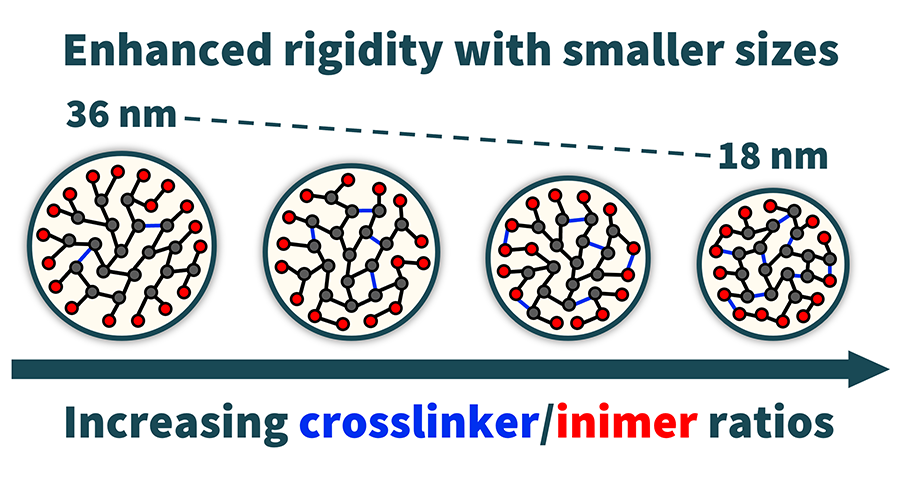A new class of organic nanoparticles
A recent study shows that through hyperbranching and chemical cross-linking, a dense bonding network can be developed in organic nanoparticles.
Nanoparticles have a wide variety of applications, from drug delivery to electronics to air purification. Their small size and tunable properties make them particularly valuable for technological advancements and scientific research. When polymers made from nanoparticles are grafted together, the functionality of the materials can be improved.
Organic nanoparticles (oNP) are chemically more versatile than their inorganic counterparts, allowing for functionalization and customization to suit specific biomedical and technological applications; however, existing materials were limited in terms of their mechanical properties and chemical tunability.
A recent study published in the Proceedings of the National Academy of Sciences (PNAS) examines the impact of hyperbranching and chemical cross-linking of oNP, a process by which the two combined mechanisms achieve a dense bonding network.
Led by Carnegie Mellon faculty Krzysztof Matyjaszewski of the Chemistry Department and Michael Bockstaller of the Department of Materials Science and Engineering, the outcomes of the research showcase the capability to regulate both functional attributes and elastic properties, making the novel "bottom-up" approach suitable for creating functional materials for a wide range of applications. The work, which was supported by the Department of Energy Office for Basic Energy Sciences and performed in collaboration with researchers at the University of Houston and the Max Planck Institute for Polymer Research in Germany, advances the fundamental understanding of the parameters that control the properties of oNPs and the chemical methods that enable their synthesis.
“Through the combination of these processes, we have been able to demonstrate the capabilities of organic nanoparticles to exhibit inorganic-type stiffness,” said Bockstaller.

Source: Proceedings of the National Academy of Sciences
Tunable size achieved through varying cross-linker/inimer compositions.
This advanced level of control of the structure and properties of oNPs was enabled by a novel and precise method for the synthesis of functional nanoparticles using atom transfer radical polymerization (ATRP) that was developed by chemistry doctoral student Rongguan Yin, the first-author of the study.
“The designed and precisely prepared by ATRP functionalized organic nanoparticles are, in fact, new gigantic single macromolecules of the molar mass reaching values of 100 million Daltons,” said Matyjaszewski.
An important feature of the new oNP system is its macroinitiator characteristics that enables versatile graft modification. The resulting brush-tethered oNPs unlock innovative applications across a range of nanomaterial technologies through direct assembly or integration.
The incorporation of functionalities outlined in this work opens the door for organic nanoparticles to further improve optical properties in materials.
Michael Bockstaller, Professor, Materials Science and Engineering
“The incorporation of functionalities outlined in this work opens the door for organic nanoparticles to further improve optical properties in materials,” said Bockstaller.
Forthcoming research in Bockstaller and Matyjaszewski groups will build upon this research to further explore functionalization opportunities such as fluorescence for this new class of oNPs and measuring their performance in practical applications.
Additional contributors to this research from Carnegie Mellon include Jirameth Tarnsangpradit (materials science and engineering doctoral candidate), Jaepil Jeong (chemistry doctoral graduate), Xiaolei Hu (chemistry doctoral candidate), Yuqi Zhao (materials science and engineering doctoral graduate), and Hanshu Wu (chemistry doctoral candidate).
